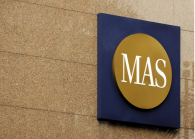
SINGAPORE (Nov 26): After refraining from easing monetary policy even as the economy contracted earlier this year, scope is growing for Singapore’s central bank to act.
To gauge how much room the Monetary Authority of Singapore has to change its policy stance, look beyond the island’s near- zero headline inflation to the core price measure.
Core inflation eased to 1.7% in October, falling below 2% for a second straight month.
“If the core inflation continues to slide in the coming months, in the lead up to the April meeting, it’s very possible” the MAS will ease policy because growth is slowing in some sectors, said Chua Hak Bin, an economist at Bank of America Merrill Lynch in Singapore.
The odds of a shift in stance will rise if core inflation slips to 1.5% or below, he said.
Singapore sets monetary policy differently from most of its peers, using its currency instead of interest rates and officially reviewing its stance just twice a year.
It’s also chosen the core price gauge as its main focus.
In contrast, the Philippines targets headline inflation, while the Bank of Thailand approved a plan this month to switch to the headline number to guide policy.
The MAS stuck to its policy of a modest and gradual appreciation of the currency in October. It didn’t need to change its stance -- core inflation, which excludes accommodation and private transport, had stayed above 2% much of the year, and the currency has weakened in the past six months against the U.S. dollar.
Careful watch
While headline inflation is the most comprehensive measure, core inflation is a better measure of underlying price gains, MAS Managing Director Ravi Menon said in July.
The central bank continues to watch core inflation “quite carefully” and it is likely to remain firm in the coming months, MAS chief economist Edward Robinson said yesterday.
Pressure to ease policy may emerge.
The government said yesterday a global slowdown will restrain the island’s growth this year before an uneven recovery in 2015.
The central bank is likely to ease policy in April even after data released yesterday showed the economy improved last quarter from a contraction in the previous three months, according to Royal Bank of Scotland Group Plc.
Gross domestic product grew an annualized 3.1% from the second quarter.
“Any headwinds to this number could push Singapore into a downward cycle, and that would necessitate monetary easing,”
RBS economist Vaninder Singh said yesterday.
Core inflation has come off and reached a level that will allow the MAS to ease in April, Singh said.
Volatile items
Many countries exclude food and energy in core inflation, deeming them to be volatile.
Singapore includes these items and instead strips out accommodation and private road transport, which made up almost a third of its consumer price index basket in October.
Singapore’s broader headline inflation rate slowed to 0.1% in October, the weakest pace since 2009, restrained by curbs on property and vehicle purchases.
The cost of owning a car in Singapore can fluctuate dramatically as supply is limited by government permits designed to control pollution and congestion.
Home prices surged to records in recent years before the island tightened rules to damp speculation.